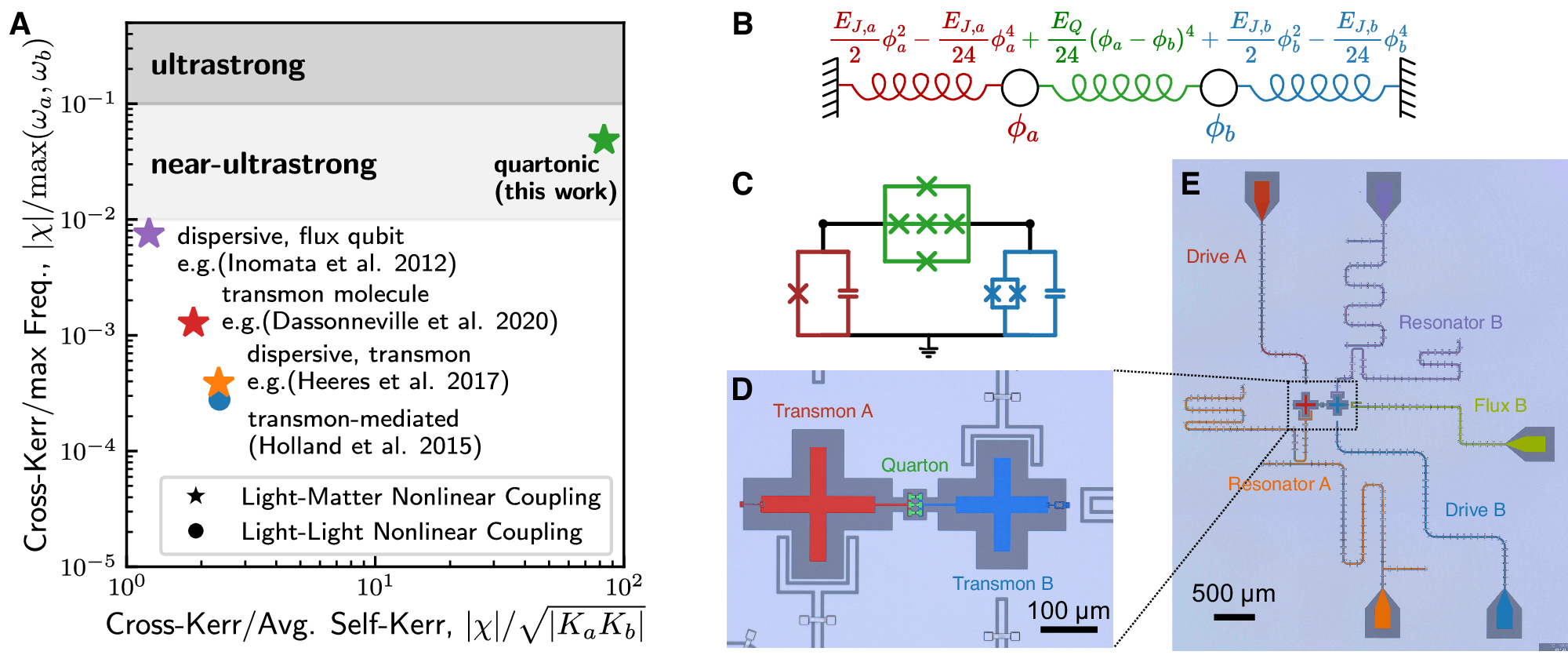2025-04-30 マサチューセッツ工科大学(MIT)
<関連情報>
- https://news.mit.edu/2025/mit-engineers-advance-toward-fault-tolerant-quantum-computer-0430
- https://www.nature.com/articles/s41467-025-59152-z
超伝導回路における超強力な非線形光-物質結合 Near-ultrastrong nonlinear light-matter coupling in superconducting circuits
Yufeng Ye,Jeremy B. Kline,Alec Yen,Gregory Cunningham,Max Tan,Alicia Zang,Michael Gingras,Bethany M. Niedzielski,Hannah Stickler,Kyle Serniak,Mollie E. Schwartz & Kevin P. O’Brien
Nature Communications Published:30 April 2025
DOI:https://doi.org/10.1038/s41467-025-59152-z

Abstract
Light-matter interaction between an atom and an electromagnetic resonator is ubiquitous in quantum technologies. Although linear light-matter coupling gσ^x(a^+a^†) can reach the ultrastrong regime g/ω > 10−1, nonlinear light-matter coupling χ/2σ^za^†a^ is typically perturbative and limited to χ/ω < 10−2. Nonlinear coupling has the advantage of commuting with the atomic σ^z and photonic a^†a^ Hamiltonian, allowing for fundamental operations such as quantum-non-demolition measurement. Here, we use a superconducting circuit to demonstrate the experimental realization of near-ultrastrong χ/ω = (4.852 ± 0.006) × 10−2. We also show signatures of light-light nonlinear coupling (χa^†a^b^†b^) and χ/2π = 580.3 ± 0.4 MHz matter-matter nonlinear coupling (χ/4σ^z,aσ^z,b), representing the largest reported ZZ interaction between two coherent qubits. Such advances in the nonlinear coupling strength of light, matter modes enable new physical regimes and could lead to orders of magnitude faster qubit readout and gates.



